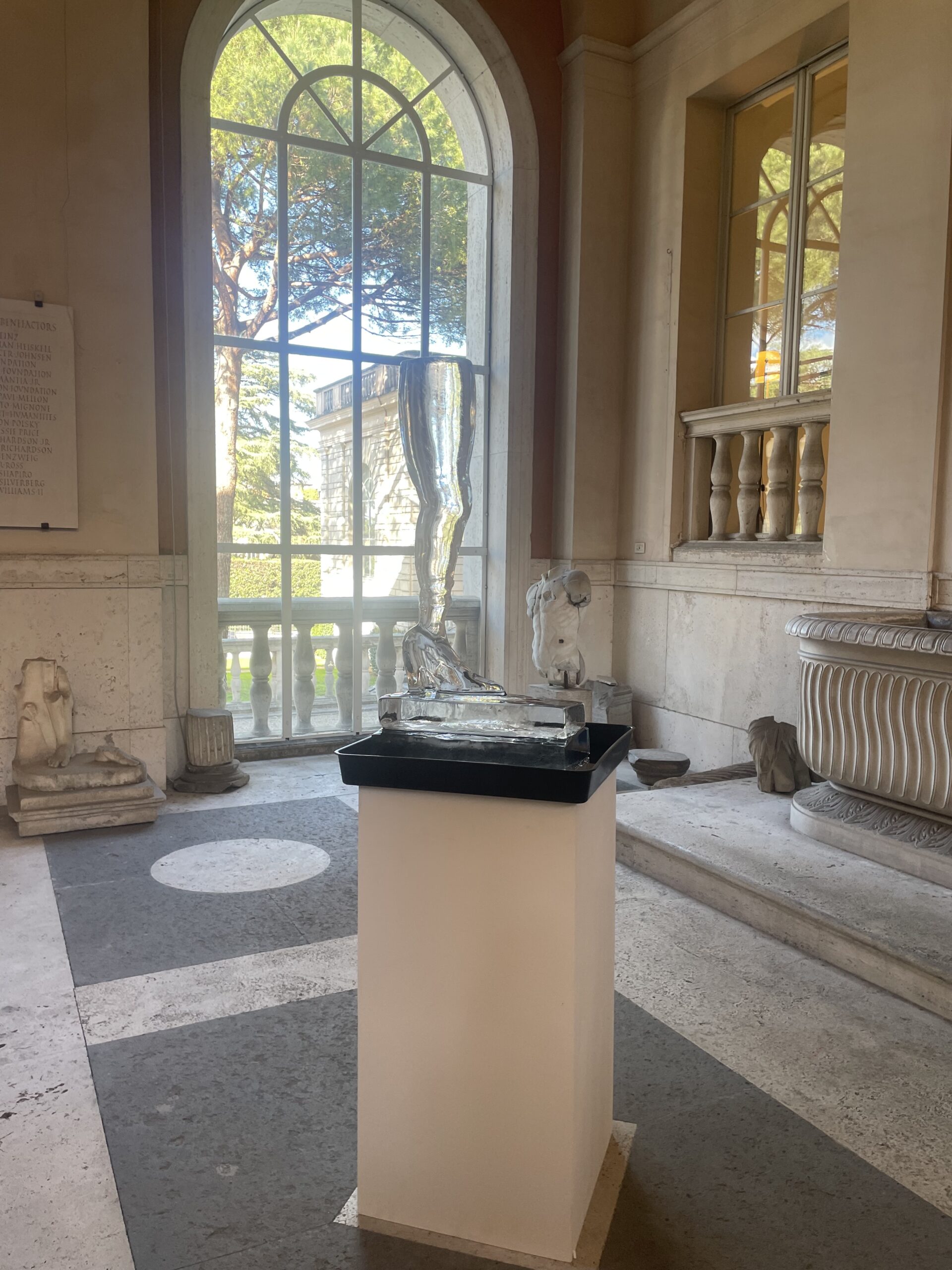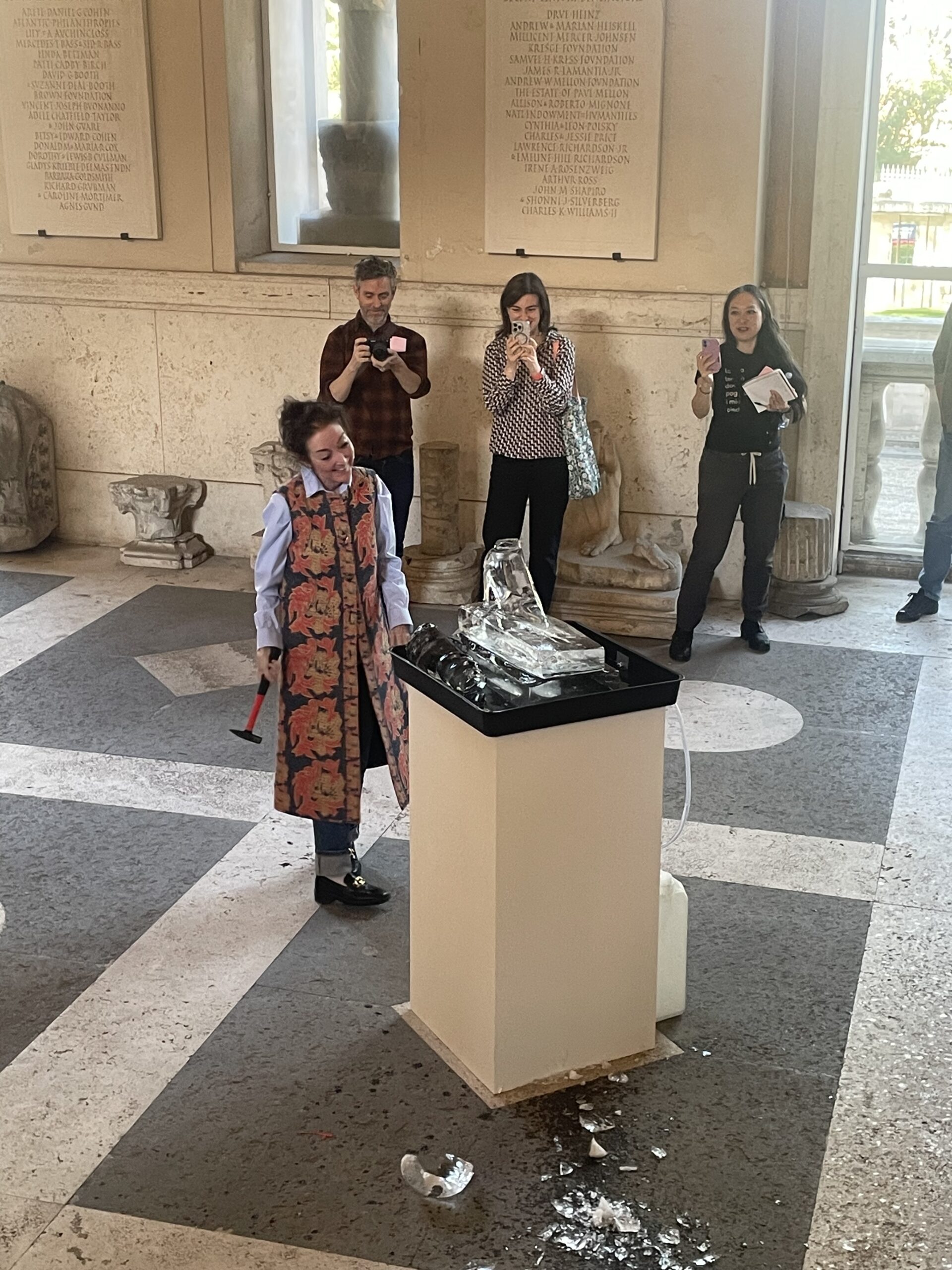
Lizzi Bougatsos, Self Portrait, at the American Academy in Rome
On March 31st, Devon Dikeou brought Lizzi Bougatsos’ Self Portrait to the American Academy in Rome, as part of a presentation with art historian Julia Rose Katz, after they realized that they both shared a connection to Bougatsos – Dikeou as the largest collector or her artwork, and Katz whose work is influenced by her personal experiences that evoke themes of breakage and repair as well as the use of found objects, also characteristic of Bougatsos’ work. Self Portrait, a mold of the artist’s leg in ice, posed a playful (and temporary) addition to the collection of fragments from Roman statues in the lobby of the Academy.
In an art market where money is the medium, Bougatsos’ sensibilities remain refreshingly punk. In an interview with zing she once explained that she considered art to be, “basically a gluttonous production of waste and more garbage and more things that we’re going to have to bury,” when asked why she’d turned to working with ephemera like garbage, living plants, and of course–ice.
Because of her concerns with medium, Bougatsos’ work often feels like it’s mid-process, like a force of nature, something that is always becoming something else. She refers to this ecstatic dance of creation and destruction, writing in a contributor’s statement for zing #24, as if a priestess invoking primal forces:
Aloe dripping from their tongues as they chant the sounds of God, ancestors, jungle flora, and spit. Money is flying. No one gives a shit but they want it all and the rum on the top of the pole, greased with lard.
The project for which this statement was written, Looking for M.J., presents a kind of visual poem that operates on an instinctive logic rather than an intellectual one. Right away, reality is suspicious. The title, which alludes to the conspiracy theory that Michael Jackson faked his death (as Elvis and JFK before him), is paired with an image of a man in a Bigfoot-like mask. Later, a blurry image of a woman awkwardly wrapped in a blanket channels Warhol’s Suicide (Fallen Body). There’s a sense of the mythical, but also a sense of the absurd.

two-page spread from Looking for M.J., zing #24
Across 14 pages, images continuously talk to each other in a way that is only partially comprehensible: a photo of a dance party across a table of toppled wine glasses; a few pages on, a single wine glass casts its ghostly outline onto a wall—across from a gnarled, split tree root, which resurfaces in the background of an image of a Virgin and Savior headstone in a cemetery, thematically echoing the ghostly outline of the glass.

Devon Dikeou showing how it’s done at the American Academy in Rome
There’s something about the vibrant and gritty energy of Bougatsos’ work that feels like you’re at a house party at the end of the world – ancient statues reduced mostly to kind-of-cool rocks, mourning dressed up as nightlife. Ice melts and mountains crumble. All civilizations end up as ruins. It’s strangely comforting in 2025 in a world that feels like it’s perpetually collapsing to go on anyway, dancing on the edge, waiting for the bass drop.
-Rachel Dalamangas
Correction: An earlier version of this post mistakenly referred to Katz as Rose Katz. Additionally, language was adjusted to better describe her relationship to Bougatsos’ work.